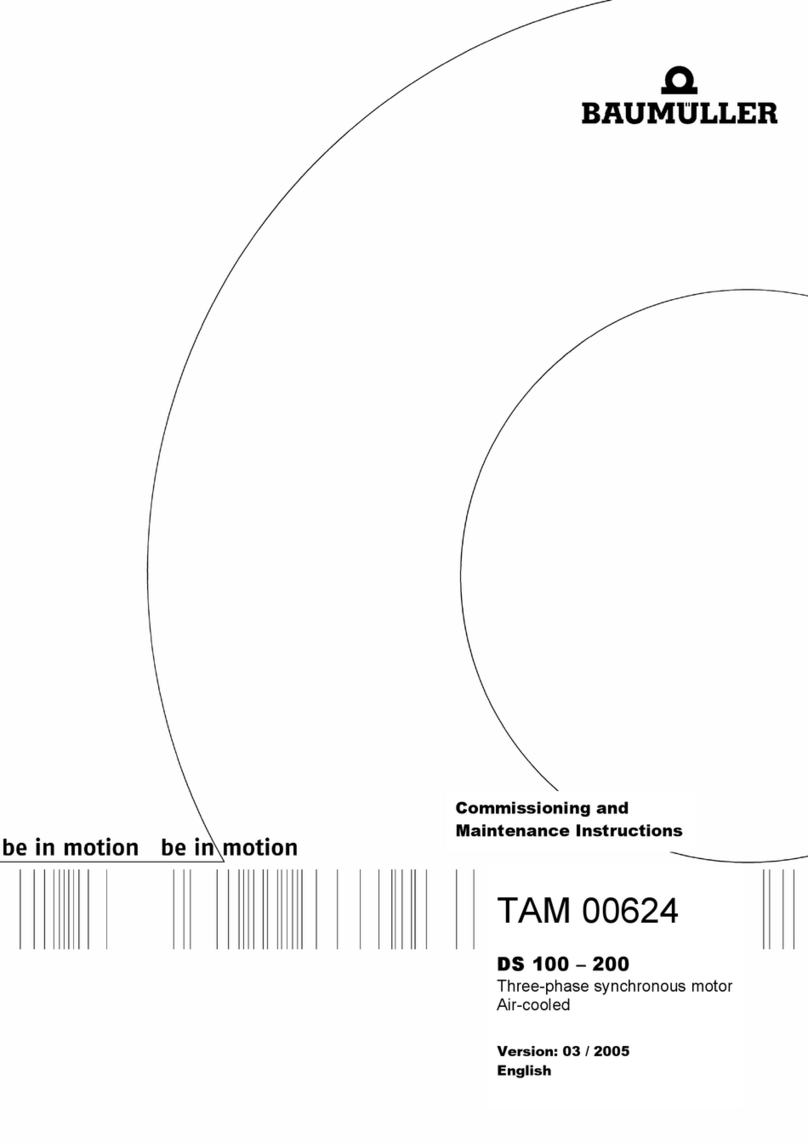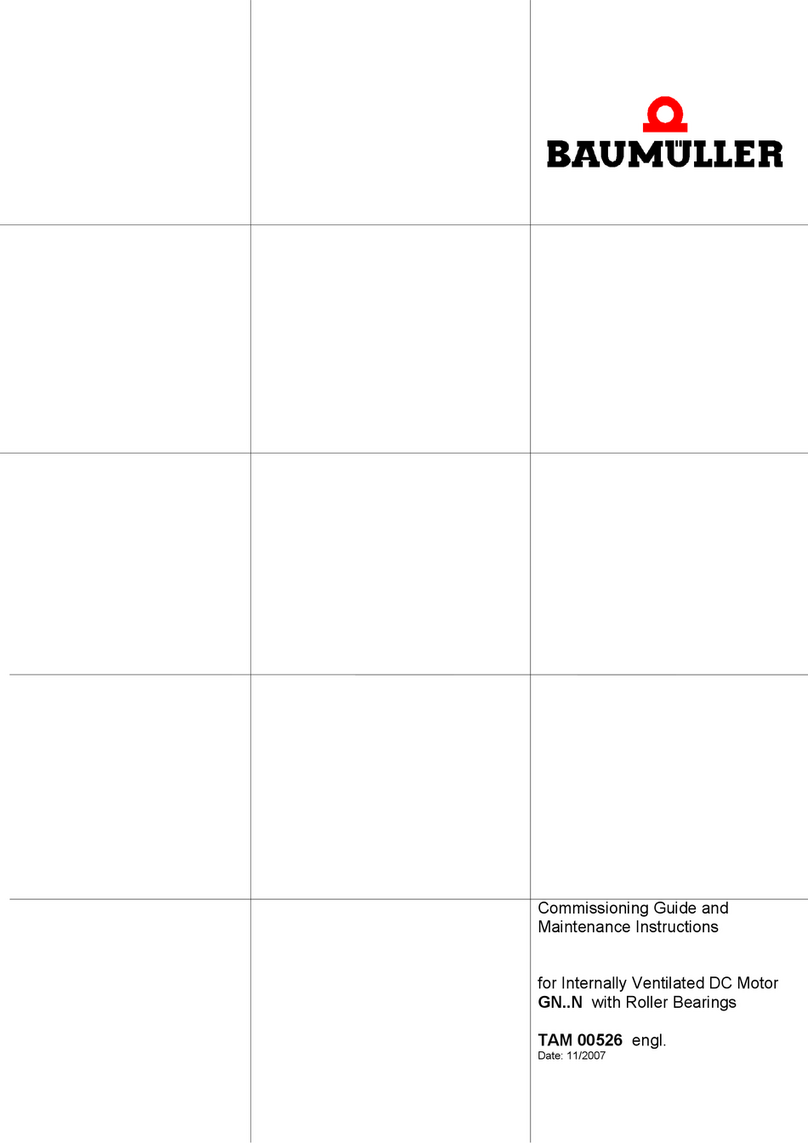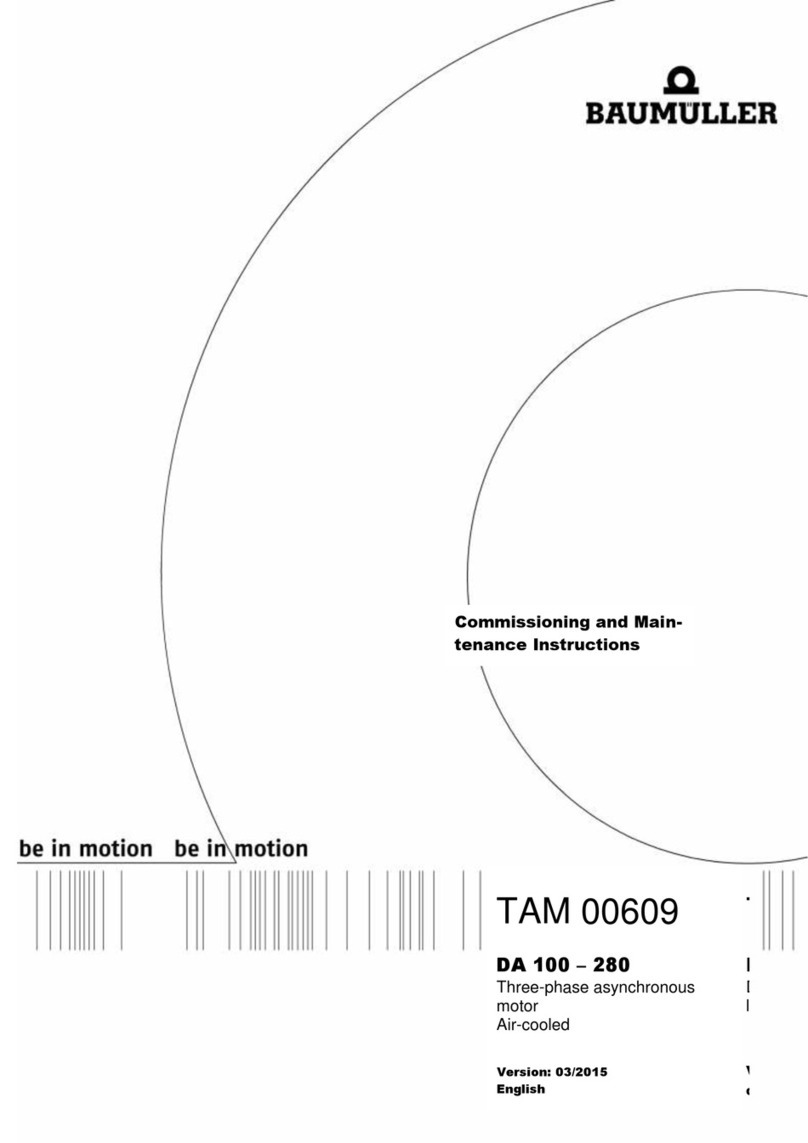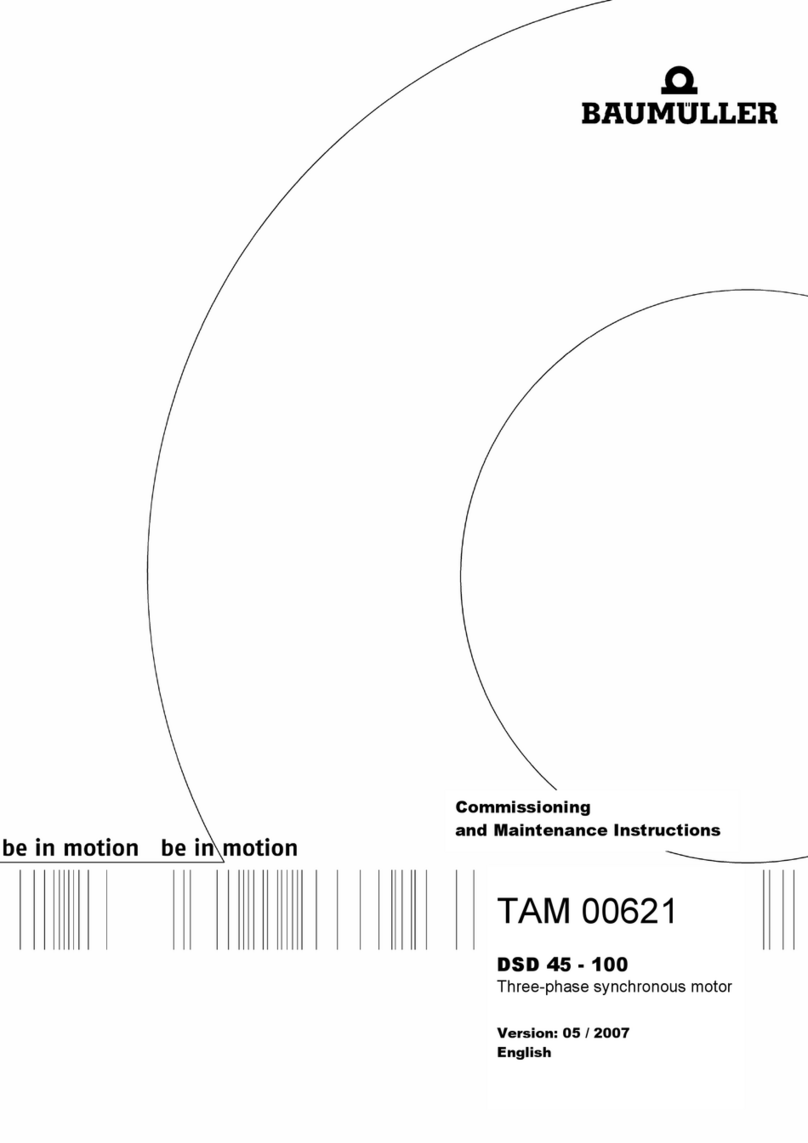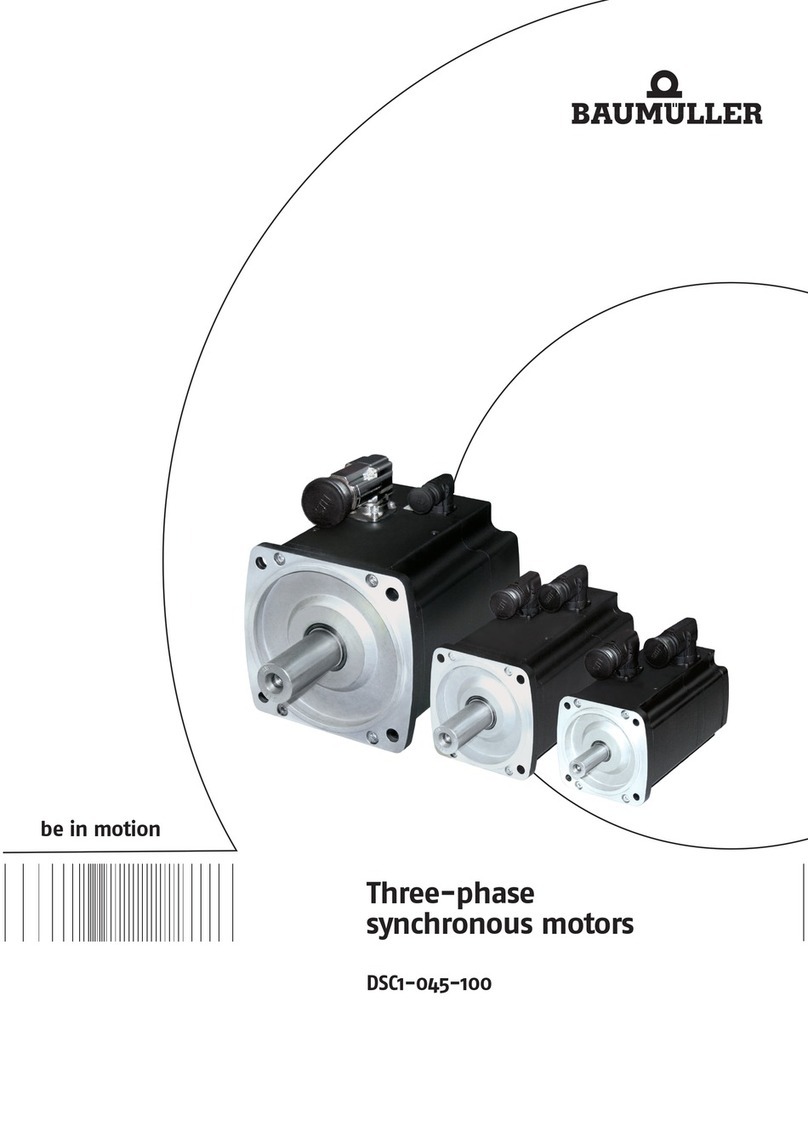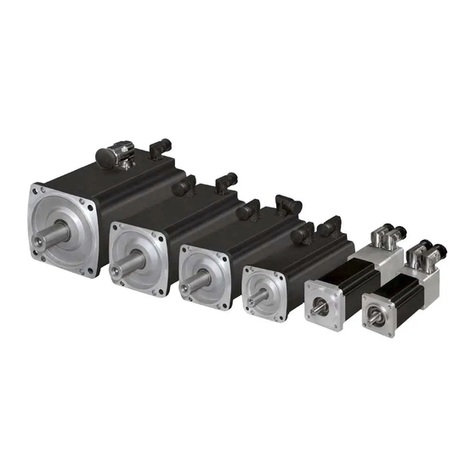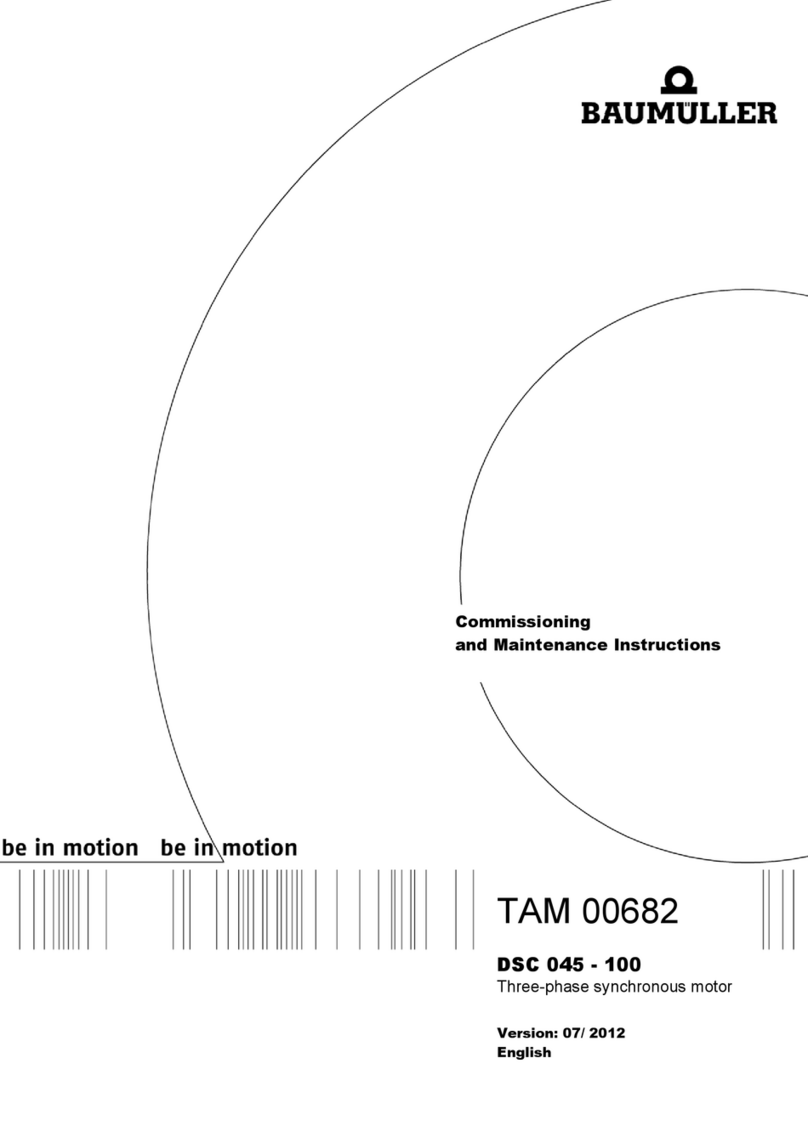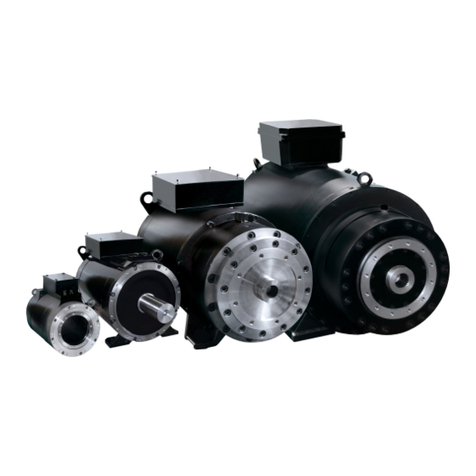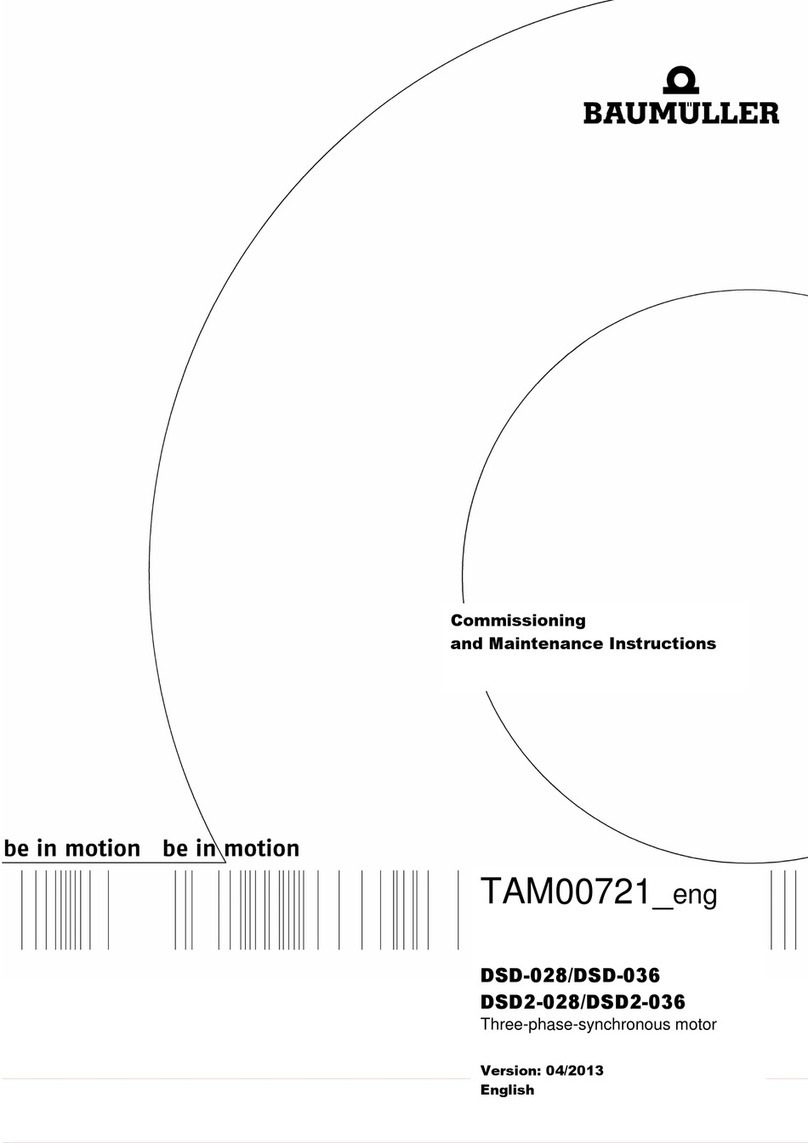
TAM 00746 3
DSP1 045 - 100 11 / 2019
Three phase synchronous motor English
Content
1General Safety Notes..........................................................................................4
1.1 Safety........................................................................................................................................4
1.2 Intended use..............................................................................................................................5
1.3 Prohibition of unauthorized modifications and alterations.........................................................6
2Operating conditions..........................................................................................6
2.1 Product description....................................................................................................................6
2.2 Scope of delivery.......................................................................................................................7
2.3 Type plate..................................................................................................................................7
2.4 Technical data...........................................................................................................................8
2.5 Transport, shaft lock, temporary storage ..................................................................................9
2.6 Installation conditions, cooling data.........................................................................................10
2.7 Balancing, output elements, vibrations....................................................................................11
3Mounting............................................................................................................13
3.1 Safety notes ............................................................................................................................13
3.2 Setting up and fixing................................................................................................................13
3.3 Vibrations and vibration resistance .........................................................................................14
4Electric connection...........................................................................................16
5Commissioning, operation...............................................................................18
5.1 Safety notes ............................................................................................................................18
5.2 Tests before commissioning...................................................................................................18
5.3 Commissioning, operation.......................................................................................................19
5.4 Failures....................................................................................................................................20
6Inspection and maintenance............................................................................22
6.1 Inspection................................................................................................................................22
6.2 Maintenance............................................................................................................................22
7Disposal.............................................................................................................22
8Appendix 1: Pole assignments (power and control connections)................23
8.1 Main connection via the plug...................................................................................................23
8.2 Main connection via terminal box (standard version according to the catalogue)..................23
8.3 Main connection via terminal box (customer-specific version according to EN 60034; not UL-
approved)................................................................................................................................24
8.4 Main and control connection via combination mounting socket (customer-specific version)..25
8.5 Fan connection 24 V DC / 115 V AC / 230 V AC ....................................................................26
8.6 Control connection: Resolver..................................................................................................26
9Appendix 2: Version with water cooling.........................................................27
9.1 Performance definition for water-cooled machines.................................................................27
9.2 Motor cooling...........................................................................................................................27
Mounting notes ..........................................................................Fehler! Textmarke nicht definiert.
9.3 Electric connection..................................................................................................................28
9.4 Information on the required coolant volume rate of flow.........................................................29
9.5 Cooling water quality...............................................................................................................30
9.6 Minimum coolant temperature in dependance of the ambient conditions...............................30
9.7 Operating malfunctions ...........................................................................................................32
9.8 Inspektion................................................................................................................................32
